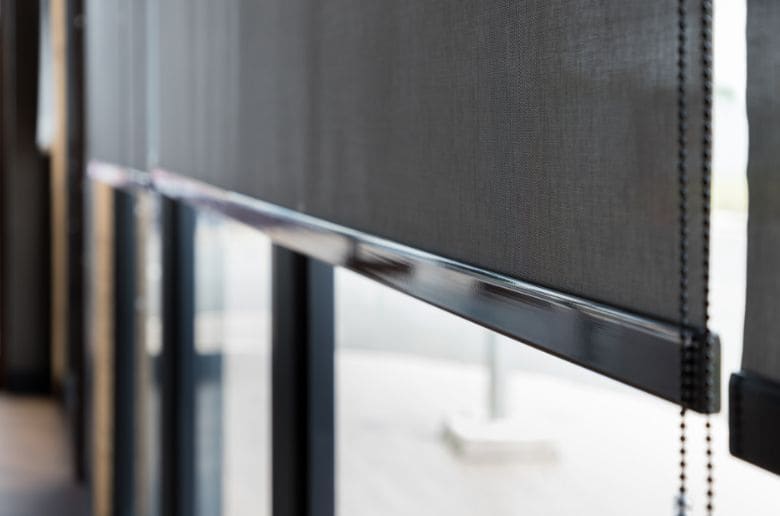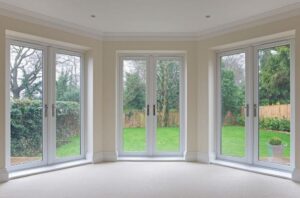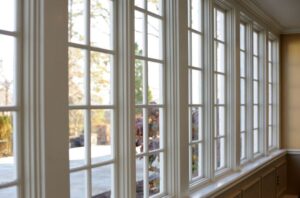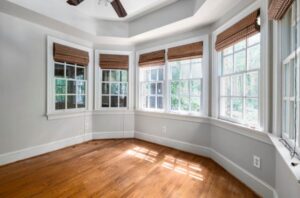In the debate of Window Tint vs Blinds, homeowners and office managers often find themselves at a crossroads, deciding which option best enhances their space.
Both window tint and blinds have unique qualities that significantly impact the ambiance and functionality of any room. Selecting the right window covering is not just about style; it’s a decision that affects daily comfort, energy efficiency, and privacy.
This article delves into the key aspects of window tint and blinds, exploring how each option measures up in terms of light control, energy savings, design versatility, and more.
Let’s unravel these elements to guide you toward the most suitable choice for your environment.
Comparison Table for Window Tint vs Blinds
| Feature | Window Tint | Blinds |
|---|---|---|
| Light Retention | Allows natural light while offering UV protection | Adjustable control over light and privacy |
| Energy Efficiency | Reflects sun’s heat, reducing energy costs | Provides insulation, less effective than tint |
| Design Flexibility | Customizable styles, colors, and patterns | Available in various materials and styles |
| Occupant Comfort | Reduces glare and eye strain | Adjustable for light and privacy control |
| Privacy & Security | Blocks interior view, offers one-way mirror effect | Adjustable for complete or partial privacy |
| UV Protection | Blocks up to 99.9% of UV rays | Less effective in blocking UV rays |
| Maintenance | Low maintenance, easy to clean | Requires regular cleaning and maintenance |
| Aesthetic Appeal | Modern, sleek look | Sleek and modern appearance |
| Cost | Higher initial cost, long-term savings | Generally more budget-friendly |
| Heat Reflection | Reflects sunlight, maintains room temperature | Absorbs heat, can increase room temperature |
| Glare Reduction | Screens out sun glare, allows natural light | Blocks natural light to reduce glare |
| Installation | Easier, DIY-friendly | Can be more complex, varies with design |
Key Comparison: Window Tint and Blinds
When choosing between window tint vs blinds, several factors come into play, each impacting the ambiance and functionality of your space.
Light Retention and Views: Natural Light vs Adjustable Control
Window tint excels in allowing natural light while filtering out harmful rays and reducing glare. This means enjoying bright, sunlit rooms without the downsides of UV exposure.
In contrast, blinds offer the advantage of adjustable light control. You can tailor the amount of light entering a room, from completely blocking out sunlight for a cozy movie afternoon to letting in just enough light for a softly illuminated workspace.
Energy Efficiency: Sun’s Heat Reflection vs Insulation Properties
The efficiency of window tint lies in its ability to reflect the sun’s heat, thus maintaining a cooler interior temperature and leading to significant energy savings. This is particularly beneficial during the hot summer months.
Blinds, while providing some level of insulation, are generally less effective than window tint in this regard. They are better suited for maintaining privacy rather than significantly reducing heat intake.
Design Flexibility and Aesthetic Appeal: Customizability and Modern Looks
In terms of design, window tint offers a sleek, modern look with a variety of styles, colors, and patterns to choose from. It’s a subtle yet impactful way to enhance the aesthetic of a space.
Blinds, on the other hand, bring a classic charm and are available in numerous materials and styles. They can be a focal point in a room’s design or blend seamlessly with the existing decor.
Occupant Comfort and Glare Reduction: Eye Strain Minimization and Light Control
Comfort is key in any living or working space. Window tint reduces glare and eye strain, a crucial factor for those spending long hours in front of screens.
Blinds also help in managing light levels and reducing glare but require manual adjustment to achieve the desired comfort level.
Privacy and Security: One-Way Mirror Effect vs Adjustable Privacy
Privacy is a significant concern for many, and window tint addresses this by blocking the interior view from the outside, often with a one-way mirror effect.
Blinds provide adjustable privacy levels, allowing you to control how much of the interior is visible from the outside.
UV Protection: Level of Effectiveness in Blocking Harmful Rays
Window tint is highly effective in blocking up to 99.9% of harmful UV rays, protecting both your skin and your furniture from the adverse effects of sun exposure.
Blinds offer less protection in this area, making window tint the superior choice for UV protection.
Maintenance and Durability: Cleaning Ease and Longevity
When it comes to maintenance, window tint is a clear winner. It is long-lasting and requires minimal upkeep compared to blinds, which need regular cleaning and are more susceptible to wear and tear.
Cost Considerations: Initial Investment vs Long-Term Savings
The initial cost of window tint can be higher, but it offers long-term savings through energy efficiency and durability. Blinds are generally more budget-friendly upfront but may not provide the same level of long-term benefits.
In conclusion, both window tint and blinds have their unique advantages. The choice largely depends on your specific needs and preferences, whether it’s prioritizing energy efficiency, design flexibility, or cost considerations.
Which is Better? Analyzing Suitability for Different Needs
Determining whether window tint or blinds are better depends on various factors, including the setting and specific requirements.
Residential vs Commercial Suitability: Matching to Environments
In a residential setting, window tint offers a modern aesthetic and requires minimal maintenance, making it ideal for busy homeowners. It provides excellent UV protection, ensuring the longevity of interior furnishings.
Blinds, with their adjustable light control, offer a traditional look and are suitable for those who prefer to alter room lighting throughout the day.
For commercial spaces, window tint can be a smart choice due to its energy efficiency and ability to reduce glare, essential in office environments with numerous screens.
Blinds can be used to create a professional atmosphere and offer the flexibility to adjust light for presentations or meetings.
Heat Reflection and Room Temperature Control: Comfort in Various Settings
Window tint’s ability to reflect sunlight helps maintain a consistent room temperature, a boon in regions with extreme temperatures. This feature ensures comfort in both homes and offices. Blinds, while providing some level of heat absorption, are less efficient in temperature control.
Glare Reduction: Balancing Natural Light and Screen Use
The glare reduction feature of window tint is particularly beneficial for those spending extended periods in front of screens, reducing eye strain and increasing comfort. Blinds, when adjusted correctly, can also reduce glare but may compromise on natural light entry.
Installation Ease: DIY-friendly Options vs Professional Requirements
Window tint is relatively easier to install and can be a do-it-yourself project for the enthusiastic homeowner. Blinds installation can be more complex, often requiring professional assistance, especially for large or uniquely shaped windows.
Long-term Benefits and Drawbacks: Weighing Durability and Maintenance Costs
Window tint is known for its durability and low maintenance, making it a cost-effective long-term investment. Blinds, depending on the material, can require more frequent cleaning and may be prone to wear and tear.
Aesthetic Impact: Enhancing the Look of Homes and Offices
The choice between window tint and blinds also comes down to aesthetic preference. Window tint offers a sleek, modern look, while blinds can add a classic or contemporary touch, depending on the style.
Health and Wellness Considerations: Protecting from UV Rays and Reducing Eye Strain
The health benefits of window tint, particularly its UV blocking properties, are significant. It protects both skin and eyes, an essential consideration for health-conscious individuals.
Blinds provide less UV protection but can be effective in reducing eye strain through light control.
Financial Implications: Upfront Costs vs Energy Savings
While window tint may have a higher initial cost, its energy-saving properties can lead to significant cost reductions in the long run. Blinds are a more budget-friendly option initially but may not offer the same level of energy efficiency or durability.
Each of these factors plays a crucial role in determining whether window tint or blinds are more suitable for your specific needs, whether in a residential or commercial setting.
Conclusion
In summarizing Window Tint vs Blinds, it’s evident that both options have their unique advantages and limitations.
While window tint offers energy efficiency and UV protection, blinds provide adjustable light control and a classic aesthetic. When personalizing your choice, consider factors like location, lifestyle, and design preferences.
As future trends evolve, we may see innovations in both window tints and blinds, offering more advanced features. Ultimately, for homeowners and businesses, the decision should align with their specific needs, balancing functionality, style, and budget.





